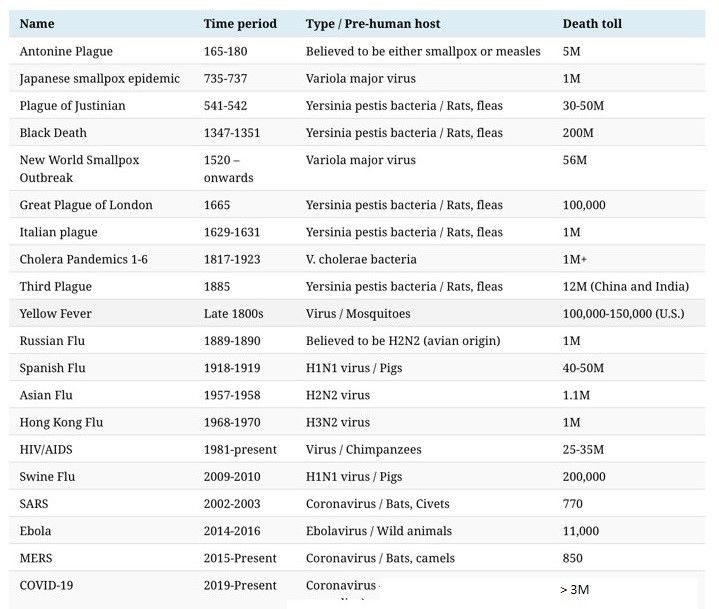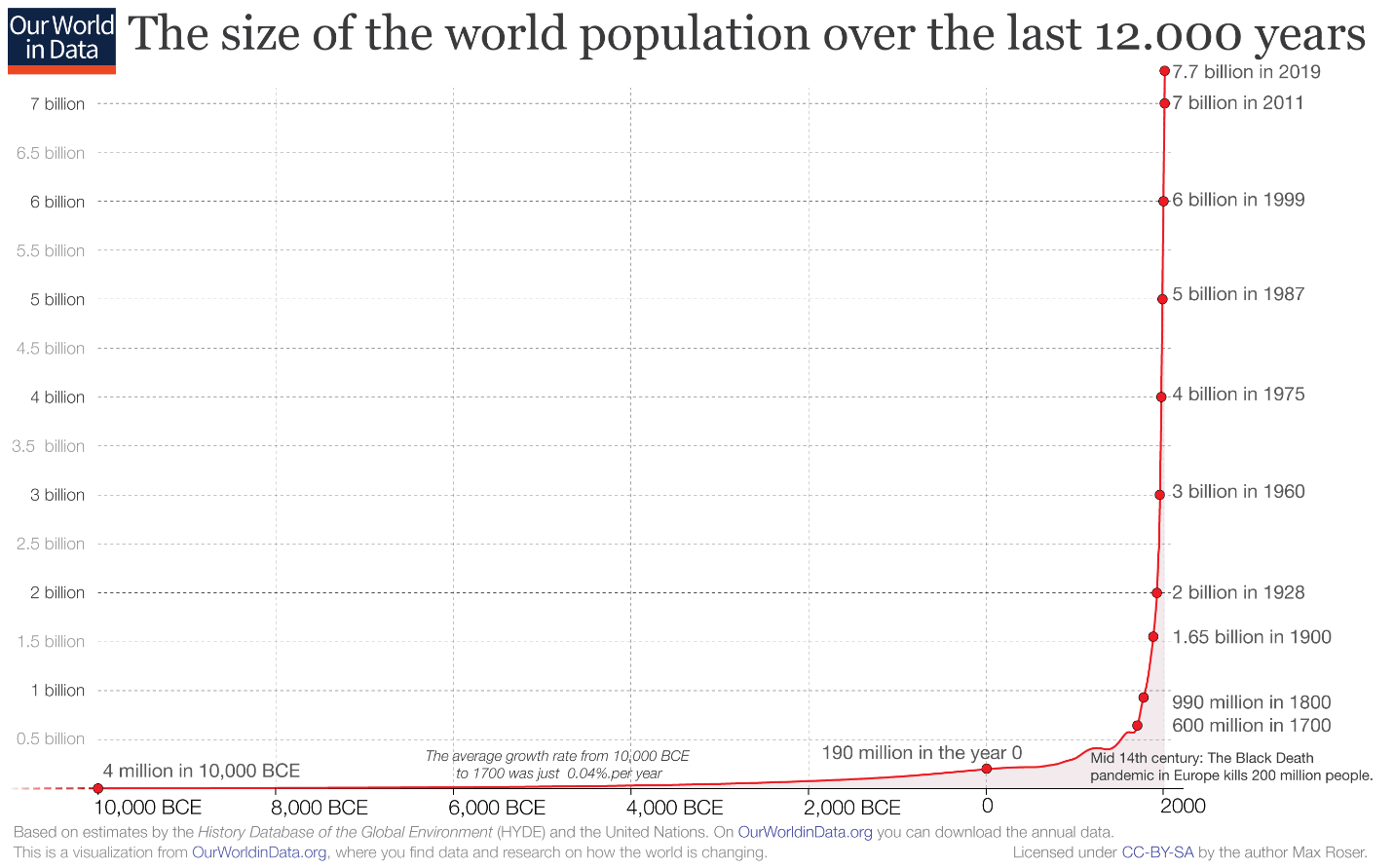An endemic disease is a disease that is always present in a certain population or region. One of the most talked-about endemic diseases is malaria. An epidemic is the rapid spread of disease to a large number of people in a given population within a short period of time, for example, meningococcal infections. Whereas, a pandemic is an epidemic of disease that has spread across a large region, for instance, multiple continents or worldwide, affecting a substantial number of people. A disease or condition is not a pandemic merely because it is widespread or kills many people; it must also be infectious, for example, COVID-19 [1].
In the realm of infectious diseases, a pandemic is a worst-case scenario. When an epidemic spreads beyond a country’s borders, that’s when the disease officially becomes a pandemic. Communicable diseases existed during humankind’s hunter-gatherer days, but the shift to agrarian life 12,000 years ago created communities that made epidemics more possible. Malaria, tuberculosis, leprosy, influenza, smallpox, and others first appeared during this period [2].
Throughout history, there have been several pandemics such as smallpox and tuberculosis. The most fatal pandemic recorded in human history was the Black Death (Plague), which killed an estimated 75 – 200 million people in the 14th century. Other notable pandemics include the 1918 influenza pandemic (Spanish flu) and the 2009 influenza pandemic (H1N1). Current pandemics include HIV/AIDS and the 2019 – 20 coronavirus pandemic [1]. A major global pandemic that has occurred over time is listed below [3].

Throughout history, nothing has killed more human beings than infectious diseases [4]. It is generally zoonoses such as influenza and tuberculosis which constitute most of the widespread outbreaks, resulting from the domestication of animals. There have been a number of particularly significant epidemics that deserve mention above the “mere” destruction of cities.
The first recorded outbreak of bubonic plague started in Egypt and reached Constantinople (now known as Istanbul) the following spring, killing (according to the Byzantine chronicler Procopius) 10,000 a day at its height, and perhaps 40% of the city’s inhabitants. The plague went on to eliminate a quarter to half the human population of the known world. It caused Europe’s population to drop by around 50% between 550 AD and 700 AD [1]. This was the only instance in the history of human civilization that the global population growth showed a declining trend (Figure 1). Eight hundred years after the last outbreak, the plague returned to Europe. Starting in Asia, the disease reached the Mediterranean and western Europe in 1348 (possibly from Italian merchants fleeing fighting in Crimea), and killed an estimated 20 to 30 million Europeans in six years; a third of the total population, and up to a half in the worst-affected urban areas. The third plague pandemic (1855-85) started in China and spread into India, where 10-12 million people died.

Figure – 1
The “Spanish flu”, 1918 – 1919. First identified early in March 1918 in U.S. troops training at Camp Funston, Kansas. By October 1918, it had spread to become a worldwide pandemic on all continents, and eventually infected about one-third of the world’s population (or ≈500 million people). Unusually deadly and virulent, it ended almost as quickly as it began, vanishing completely within 18 months. Within six months, some 50 million people were dead [1]. The “Asian Flu” of 1957 – 58, an H2N2 virus first identified in China in late February 1957. It caused about two million deaths globally. The “Hong Kong Flu”, 1968 – 69, an H3N2 virus first detected in Hong Kong in early 1968 and spread across the world, lasting until 1972. This pandemic killed approximately one million people worldwide. The “Swine Flu”, 2009 – 10, an H1N1 virus first detected in Mexico in early 2009. Estimates for the mortality of this pandemic range from 150 to 200 thousand.
HIV/AIDS, or Human Immunodeficiency Virus, is considered by some scientists a global pandemic. However, the WHO currently uses the term ‘global epidemic’ to describe HIV. As of 2018, approximately 37.9 million people are infected with HIV globally. There were about 770,000 deaths from AIDS in 2018 [5]. Likewise, Hepatitis B is another global pandemic that no one talks about, yet one in three people worldwide has been infected. In 2013, hepatitis B and C together was the seventh-leading cause of death worldwide, with hepatitis B causing 780,000 deaths annually.
Why pandemic does happen?
Pandemic diseases is not a new phenomenon, it existed from the time when humans first settled down and started farming. Gradually, over thousands of years, the human population grow slowly and steadily. The first recorded pandemic was typhoid fever (430 to 426 BCE), it killed a quarter of the Athenian troops and a quarter of the population. This disease fatally weakened the dominance of Athens, but the sheer virulence of the disease prevented its wider spread. Within a space of a few hundred years, the earth has been regularly ravaged with devastating pandemics. Pandemics have a special significance in biology, it plays an important role in the process of evolution. According to Charles Darwin’s theory of evolution, only the fittest individuals will survive. It is not the most strongest of the species, nor the most intelligent that will survive. It is the one that has the best genes which will allow them to adapt to the various challenges thrown at them by nature. The laws of nature are such that no one species can dominate. Moreover, with the regular pandemic, the human population is kept under check so there is no overcrowding. However, in the past 3 centuries, the world population has risen rapidly, primarily as a result of the decline in child mortality, improvement in sanitation, and advancement in modern medicine that followed the industrial revolution. As a results, we now understand the various pathogens involved in dreaded diseases better and have successfully developed antidote (vaccines) against them. Some of the pathogens like smallpox virus and poliovirus has been completely eradicated from this world. No doubt the scientific achievements are stupendous; however, we have interfered with the basic law of nature. Even unfit individuals with poor genes can now easily survive with human intervention. As a result of this, the projected human population on earth by 2100 will be over 10 billion.
Pandemic diseases are a natural phenomenon and it will keep coming at regular intervals. Moreover, killer pathogens are now been designed in labs and are used as bioweapons. Hence, we may see attack of pandemic diseases more frequently. With a proper understanding of the pathogens, it is possible to repel and neutralize the attacks successful. However, there may a huge financial and social implication for this for which the governments should be prepared well in advance.
References:
- https://en.wikipedia.org/wiki/Pandemic
- Pandemics – That Changed History. https://tinyurl.com/ru6pv9u
- LePan N. Visualizing the History of Pandemics. https://tinyurl.com/r4xhshy
- Covid-19: The history of pandemics. https://tinyurl.com/uevtd36
Epidemiology of HIV/AIDS. https://en.wikipedia.org/wiki/Epidemiology_of_HIV/AIDS
